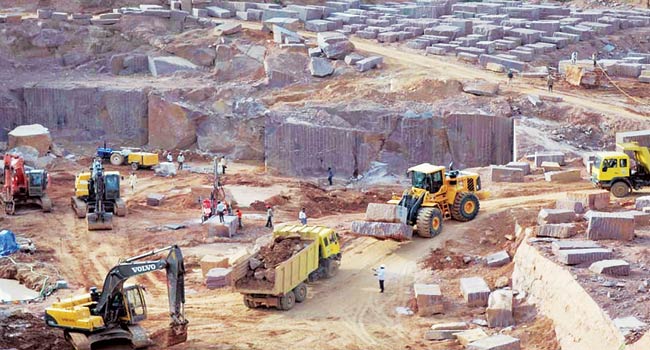
Maharashtra recorded 1,39,706 illegal mining cases between 2013 and 2017, the highest number in the country
Maharashtra recorded 1,39,706 illegal mining cases between 2013 and 2017, the highest number in the country, revealed data submitted by the Union environment ministry before the Rajya Sabha on January 3.
However, the state had one of the lowest number of prosecutions in such cases. The state filed 712 first information reports (FIR) and one court case, while seizing around 1,39,000 vehicles used in illegal mining operations and collecting Rs 267 crores as fines from offender.
India recorded 4,16,410 cases during the same time, which means Maharashtra accounts for 33.5% of all cases in the country. Uttar Pradesh recorded 36,054 illegal mining cases, Madhya Pradesh 46,193, Karnataka 33,390, and Goa had 3 cases. The information was submitted in response to a query on the environmental impact of illegal mining.
The cases involve mining of sand, iron ore, bauxite, chromite, coal, and stone in Maharashtra.
“The high number of cases in Maharashtra can be clearly attributed to better detection, documentation and reporting related to illegal mining as the district administration in the state is more vigilant,” said Satish Gavai, additional chief secretary, state environment department. “The revenue administration and police are hand-in-glove with these illegal mining activities with areas distributed for mining purposes. Fortunately, this is not the case in Maharashtra, and the reason lesser cases are reported from other states.”
Illegal mining cases are being observed along fringes of tier I and II cities in Maharashtra where construction development is under way. The environmental impact includes loss of forest cover, habitat and biodiversity of an area, soil erosion, groundwater contamination and permanent destruction of hilly areas, said geologists.
“Excessive mining close to infrastructure projects loosens the foundation. The long term effects of such activities may lead to disasters such as bridge collapses or even inundation,” said V Subramanyan, geologist and former head of department, Indian Institute of Technology (IIT-B) Bombay, Geology department.
HT had reported in April last year that the Australian Broadcasting Corporation (ABC) found that India was facing an environment crisis with illegal sand mining fetching $ 250 million (Rs 1,611 crores) in profits every year. Sand mining is a major environmental concern which may threaten the existence of over 70% of the world’s beaches, according to the United Nations Environment Programme.
“Excessive sand mining is responsible for affecting the natural flow of rivers by creating pits along the river bed, that can be disastrous in the long term for any ecosystem,” said Subramanyan. The most important environmental requirement for a mining project is a comprehensive environment assessment programme, said Sumaira Abdulali from Awaaz Foundation, who has filed the only case related to illegal mining at the Bombay HC.
“The figures accurately indicate that illegal mining is rampant in Maharashtra. In spite of several measures, vested interests in the form of mafia have made this into an environmental disaster,” she said. Gavai said the solution is to make regulations ‘people-friendly’ so that there is better compliance.
Source: Hindustan Times

Leave a Reply